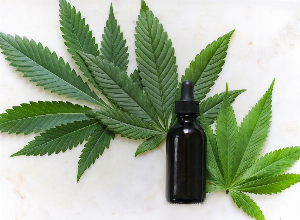MS Hugs: What are they and how to live with them?
Published Jan 23, 2021 • By Courtney Johnson
Multiple sclerosis (MS) is a progressive inflammatory disease in which the immune system attacks the protective myelin sheath covering nerve fibers, leading to nerve damage. This nerve damage causes many symptoms such as motor difficulties, vision issues and neuropathic pain, including what is called the MS “hug”.
What is an MS hug? What do they feel like? What should you do if you have one? How are they treated?
Let us explain it all in our article!

What is an MS “hug” and what causes them?
An MS hug is a descriptive name given to a series of symptoms characterized by a feeling of tightness or pressure around the ribs, chest or torso, as if the person is wearing a tight band or is being squeezed in a hug.
These hugs have two possible causes:
- Muscle spasms in the muscles in between the ribs (the intercostal muscles): These muscles help to hold the ribs in place and facilitate movement and breathing. The pain caused by these spasms wrap around the body like a hug or a girdle, giving it its unique nickname. They are also known as “girdling” or “banding”.
- Dysesthesia, from the ancient Greek “abnormal sensation”, which is caused by the nerve damage in the spinal cord and brain that MS creates. The disease breaks down the protective myelin sheath around nerve fibers, disrupting the transmission of messages to and from the brain. The brain therefore has difficulty interpreting the body’s messages and responds with sensations, including tingling, burning, itching or a feeling of restriction.
It is important to know that MS hugs are not dangerous and are not a sign of damage to the areas they affect. However, any form of chest pain should be reported to and examined by a doctor in order to eliminate other health issues.
What does an MS hug feel like?
Just as each case of MS is unique to the patient, MS hug symptoms tend to vary depending on the person. However, patients often report feeling the following sensations during an MS hug:
- Crushing
- Squeezing
- Burning - either hot or cold
- Tingling or pins and needles
- Crawling feeling under the skin
Some patients also experience MS hugs in their hands or feet, in a phenomenon that feels as if they are wearing heavy gloves or boots. Others have also reported this tight feeling around the head.
Hugs usually tend to last only a few seconds or minutes, but in some cases may last for hours or longer.
Is there a treatment for MS hugs? How to manage them?
While they are certainly uncomfortable, MS hugs usually subside on their own. Fortunately there are a number of techniques that patients can use to manage them:
Identifying triggers
Like many MS symptoms, hugs can be triggered by certain activities or other aspects of daily life. Some of these triggers may include stress, fatigue, changing weather, illness (such as having a fever) or eating a large meal. Not everyone may be able to identify their triggers, but if possible, it can allow you to avoid or reduce your exposure to them.
Keeping a diary tracking your activities, emotions and meals can help in this process.
Moving or changing positions
As simple as it sounds, merely stretching or changing positions may help ease the hug. If you notice that the hug is more severe while sitting up straight or standing, you may find that lying down is more comfortable, or vice versa.
Applying heat or cold
Some patients find that hot or cold compresses help with their hugs. A heating pad, hot water bottle or an ice pack wrapped in a cloth applied to the rib area may ease the pain and change the painful sensation into one of warmth or cold.
Tricking the brain - loose or tight clothes
In the same way that changes in temperature help change the painful sensation of MS hugs, wearing tight clothing, such as pressure stockings or a tight sports bra or wrap can distract the brain into feeling pressure instead of pain.
Conversely, for some patients, tight clothing may actually trigger their MS hug, so choosing looser-fitting clothing may be more comfortable and can prevent or ease the symptoms.
Relaxation techniques
As difficult as it sounds, staying calm and relaxed can make MS hugs easier to manage. You may find relief through techniques such as:
- Meditation
- Mindfulness
- Self-hypnosis
- Controlled breathing techniques
- Cognitive behavioral therapy (CBT)
Drug treatments
In cases where the pain is particularly severe or the hugs are long lasting, a number of drug treatments are possible, depending on the cause.
If the hug is due to muscle spasms, treatments may include those often used for the treatment of spasticity and spasms in MS patients. These may include muscle relaxers such as baclofen (Gablofen®️) or tizanidine (Zanaflex®️).
Where the hug is caused by dysesthesia, doctors may prescribe anticonvulsants like gabapentin (Neurontin®️) and pregabalin (Lyrica®️), or antidepressants such as amitriptyline (Elavil®️) or duloxetine (Cymbalta®️).
Your neurologist and medical team will work together with you to understand and control your MS hug symptoms. In some cases, no one medicine or technique will be effective on their own, so a combination of a few may work best. Make sure to communicate with your doctor so they can properly monitor your condition and modify your management plan to keep your MS hugs at bay.
Was this article helpful to you?
Feel free to share your thoughts and questions with the community in the comments below!
Take care!

 Facebook
Facebook Twitter
Twitter



